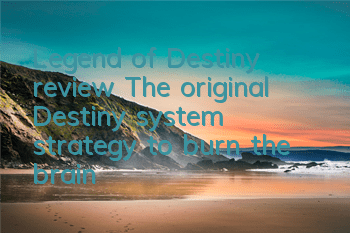I didn't play "Ghost Line: Tokyo" at the first time, but in fact, I infinitely lowered my expectations for it before starting the game - on March 1, 2022, Shinji Mikami's name and excellent visual concept art trailer gave players unlimited expectations, and then on April 1, 2022, when the game was launched, players were embarrassed to find that the video demonstration had already included almost all the gameplay content of the game.
So this looks like a good-looking but not fun game. There have been many such games in the past one or two years, such as "Upland Battlefield", "Epoch Mutation", etc. The difference is that although "Ghost Line: Tokyo" does few and superficial things, it actually has a high "completeness" -
As for what is completion, just look in the mirror with "The West of the Wild" released almost at the same time: "The West of the Wild" has countless ideas, but they only have one skin. All other settings make players counterintuitive and uncomfortable to play; while "Ghost Line: Tokyo" is just the opposite. Its content depth in plot, combat, and exploration is basically accessible to the naked eye, but in fact almost every content in it has a high degree of completion, just like a hotel buffet with mediocre methods. If you can accept its taste and material, then eating it will definitely not be an unpleasant experience.
This can be roughly seen in the steam's clearance rate - it reached 18.7% in less than two weeks after the release, so after doing a good job of playing without depth and lack of sensible psychological construction, my playing mentality also started with "Try it, if the game is bad, I will also lose it (abandon the pit)". I didn't want to play the level in one breath within a few days (although this is thanks to the isolation), and not only passed the level, but even completed most of the side tasks and collections - time: 25.9 hours. This time shows that the content of the game is indeed very limited, but the good news is that if you are not a player who has already vomited from Ubisoft Sandbox before, then it is actually quite interesting to experience a shopping trip with ghosts in "Ghost Line: Tokyo".
A summary of the main plot in one sentence - Prajna: Xiaoren, your sister is so fun
After a sudden "evaporation of the world" disaster as the introductory guide, the story of "Ghost Line: Tokyo" begins. All pedestrians on the streets lose their bodies, their souls fly into the air, trapped in the strange square cage. The protagonist Akito was originally one of the many victims, and it was like this. Fortunately, "KK" who lost his body chose to enter his body in a panic. Both of them became survivors of this great disaster: Akito wanted to save his sister Mari, and KK wanted to end the conspiracy behind the scenes Prajna to save Tokyo, so an adventure of one and two souls began like this.
Seeing this, many friends may have discovered this:I'm familiar with the story. Isn't this the (Johnny Silver Hand) KK's "Black Hand" - in fact, it may be a little different, because KK's "Black Hand" does not only make mouths in the protagonist's mind like Johnny Silver Hand, but actually brings Akatsuki's super power to fight against ghosts, that is, a ghost-catching gift package that combines "seal" to eliminate evil, damage of various elements and exploration abilities.
It seems that this story is still interesting enough, because whether it is Eastern ghosts or Western evil spirits, generally speaking, ghosts are running around. So in "Ghost Line: Tokyo", we will play a "ghost-seeing sorrow" to catch ghosts everywhere. This does have some new experiences - of course, the faceless man holding an umbrella and headless JK account for 90% of the combat experience. Let's slow down the problem. First of all, the reason why the level of this work is limited is that as a masterpiece who is innocent, "Ghost Line: Tokyo" does have many problems in narratives, and the most typical problems are about two points. The narrative is too "flow", and there are some problems with rhythm and structural arrangement.
The narrative is too "flow" means that the details of many stories are not particular enough and the logic is not strict enough - of course, through various corners of text, side tasks and dialogues on the road, the plot pit can be slightly rounded up. But the impression that the two sisters (Xiaoren and Prajna) robbed their sister (Mari) formed the entire content of the story clue: During this process, Mari was still PUA Xiaoren, forming a subtle experience of "Why is my sister so unlovable": Brother, you are escaping again, just like Mom and Dad at that time, you will only escape; Brother, you have never cared about me, you are just afraid of feeling guilty; Brother, why don't you come to save me? Brother, why don't you come to save me....
Although Mali has been enjoying this brother in the process of PUA Xiaoren, the experience of this brother should be much better, because he is addicted to the process of "Xiaoren, your sister is really fun" and cannot extricate himself - Mali is the last brick and stone he tried to open up the Yin and Yang two times. Although there is no explanation in the serious process, what we can see is that Prajna plays with his sister in front of Xiaoren in every video of the plot. Xiaoren is helpless in his grief and anger, giving people a wonderful experience like NTR.
This heroine who has been lost for a long time but is crucial to the fate of the world and needs to be saved is actually very common, such as Saint Seiya Saori (Athena) in each of the movies, but why is this saved character important and how the bond with the protagonist is generally placed in front of the player (audience or reader) at the beginning of the story. But "Ghost Line: Tokyo" doesn't, it chooses to arrange a super long broadcast before the final boss battle.
The production team probably realized that this video might be too long, so they chose to travel through countless gates and let the players walk through various placesA memorable scene to complete a brief review of the life spent by Akatsuki and his sister Mali. The question is: What did you do early? ? This is the most typical presentation of the game's narrative rhythm problem. The game has countless opportunities to intersperse the past memories of Akito and Mali in the content of Chapter 6 and a large number of side missions to strengthen the players' understanding of the emotional bond between them, but it does not. So although KK is actually shaped in the game, because he has been flirting with Akito you control, there is a natural feeling between the two, from being unfamiliar and guarding to having good trust. But as the real "driver" of Akatsuki, Mari did not establish a sense of existence at all, thus making the overall main plot interpretation unsuccessful.
*This narrative immaturity can also be reflected in Rinko's way of exiting the market. It's time to get a lunch box - send it.
Spoke spirit in side quests
Although the main plot left me with the impression that Prajna is the younger sister who really loves to play with Akatsuki, "Ghost Line: Tokyo" actually made some exquisite designs on many side missions, which is why it is very Ubisoft sandbox in terms of world exploration (it is still the version with high repetition in the early stage), but it doesn't make me feel bored when I actually play it.
The most interesting part of the side mission is reflected in the spirit of spoofing - for example, the garbage piled up in the otakus' room, making the neighbor's soul unable to go home. For example, the boss who has always wanted to improve the treatment of workers every reform measure made the workers even more dissatisfied and eventually turned into a demon. These side missions are also combined with the characteristics of traditional monsters such as Mu Ling, Umbrella Demon, Chezhou, Tengu in Japan's "Hundred Ghosts Night Walk", forming some wonderful chemical reactions of monster legends + urban style, which can make people enjoy a certain amount of fun in exploration.
Formulaized sandbox with Torii as the core, remedy of the image style
As an open world main perspective action game, the regret is that the open world and main perspective action of "Ghost Line: Tokyo" are both mediocre. In this paragraph, I will first talk about its formulaic sandbox-
Torii in the game can be considered as the "opening tower" in Ubisoft's game. Generally, Torii will have a large number of enemies to guard. After it is eliminated, it can be stamped to purify it. After purification, the explorable content will be displayed one by one. The explorable content includes Ksitigarbha Bodhisattva (most importantly, it can increase the capacity of various ammunition), KK research files (add skill points), magata (unlocking the skill tree node) and various collection items (the cat and merchant redeem prizes).
It is worth mentioning that some Torii have offering boxes - 500 worship can open the location of Ksitigarbha Bodhisattva or research documents (and some such as the best ramen, what's the end, and the meaning of wanting ninjas to appear behind them, etc.), 100 worship can restore blood volume or blueThe amount of money in the game is very abundant, so you can worship it without any pressure. Especially collecting Ksitigarbha is actually the most effective way to improve combat power except upgrades. It is recommended to complete it as first as possible.
The difference between Ubisoft's occupying points or tower opening is that "Ghost Line: Tokyo" is covered with fog, and entering the fog area will slowly die, and the "tower opening" process of purifying Torii can also eliminate fog within a certain range. Also similar to the strongholds in Ubisoft’s game, Torii also has the effect of teleportation.
Similar are all kinds of cats and businessmen - "Ghost Line: Tokyo" has a large map range, and it is very convenient to use various teleportation maps. Press X to turn on the Spirit Vision and will also have direct prompts to the mission or target location. However, it is recommended to click on the advanced skill of "Tengou Jump" as soon as possible (requires 7 magma and 45 skill points) - this way, you can summon Tengou at a specific position in the air, greatly improving the convenience of the running map (for further improving the recommended point to the aerial gliding distance).
Although it is a formulaic sandbox, it is not without highlights. In fact, in the game, especially in the main flow, the indoor scenes change rapidly, and some scenes that seem to step into the Modern Art Museum are still amazing, as if they have entered the weird fantasy scenes in the remedy game "Control". However, these eye-catching visual designs have not been implemented throughout. In addition to the relatively few design scenes and level processes, the monster modeling in the game is actually far from being detailed. However, compared to the rough modeling of monsters, the bigger problem is-
The shallow combat system is not as playable as the remedy game
If the battle content of the Old Man Ring is equivalent to that of a graduate student, then "Ghost Line: Tokyo" is probably equivalent to a primary school student. First of all, let's not talk about the (AD issue) of monsters' high repetition and skin replacement, the player's combat methods are divided into two sets: one is the wind, fire, and water "bullets" based on KK capabilities, air sliding, and spiritual vision; the other is the battle method of various auxiliary items, including bows and arrows, paralysis talismans, invisibility talismans, substitutes, etc. So what is the problem with fighting?
The main thing is: (1) There is no interaction between systems. (2) There is no interaction between the system and the monster. (3) No distinctive design was made.
There is no interaction between systems, which means that the three "bullets" of wind, fire and water only have two ways of using power storage or single shot, and there is no such thing as wind + fire =? Or wind + bow and arrow =? Water + paralysis sign =? There are relatively high imbalances in the like, for example, the accumulation of fireballs and water bombs (large and widen respectively) is much more useful than rapid fire, while the opposite is true for wind bombs (I strengthened the accumulation and wind accumulation at the first time, and I spread coins).
There is no interaction between the system and monsters, which means that the game really only has the combat feedback logic of "attack-damage", and there is no acceleration and reduction.Speed (for monsters, monsters such as Snow Girl can reduce your speed), increase damage and reduce damage, cause critical strikes, cause DOT, etc. Let the battle slightly reflect a little selective aspect, and the most basic thing is that it does not even do the strength of monster resistance.
No distinctive design is made, which means that the game actually becomes a degraded version of the FPS game, with almost no characteristics except that it can play out the enemy's "core" to complete the execution. Originally, the "seal" that is most likely to become a special mechanism is only used in the plot - in fact, this mechanism and the touch screen of the PS controller are a perfect match, but considering that it is probably not easy to implement on other platforms, so I didn't join the battle? (You can do it for KK if you can't make a seal in the plot)
Because the fighting fun in the game is very limited, and the benefits are actually not high, it is recommended not to fight any enemies that are not necessary to fight. If you upgrade, rely on the soul saved on the road to go to the phone booth to exchange for it (except for the battles that must be fought, I basically have parkour, and when the entire branch line is completed, it is about 30 level). For combat-related upgrades, since KK has been dragged out of the body several times, we were forced to "break the net", it is recommended to learn the bow and arrow system - the damage of the bow and arrow is only 1 point weaker than the full-strength fireball. The only disadvantage is that it is expensive, but the money in the game is very surplus. In addition, various execution speeds can greatly improve the game experience, and the increase in the range of the charging-related fireball and the continuous shooting of the wind bomb are also very practical.
Not much like Tokyo travel simulator, but more like a producer's storytelling
Although before playing the game, the information I received was probably that this game was "Tokyo Travel Simulator", "Lin Zhengying Simulator", etc., in terms of my personal experience, these two points are actually not very similar. First of all, as for the "travel simulator", the map range of the game is actually very small, which is just the feeling of a few large blocks. There is not much interaction between landmark buildings (for example, it does not pass through the dome, and the Tokyo Tower is only a little bit showing off its presence before passing the level), and there is no sense of interaction between people - in fact, the tide of people is an integral part of the "Tokyo Experience", which may be even more important than the buildings and the block itself.
The "ghost-catching" in the game does not have the storyline and ritual sense of Lin Zhengying. The various monster-related mini-games in the game are very simple, and the related stories are mainly based on some playful humorous styles, but do not render some weird and terrifying atmosphere like traditional Japanese monster stories. Many times, there is even a meta-sense: it is more like some miscellaneous content of the producer's own life experiences, and is released using the game as a carrier. The final gaming experience was unexpectedly good after I fully lowered my expectations for the game? During the 20-hour game, "Ghost Line: Tokyo" still gave me a better gaming experience.
+Excellent visual experience
+Very high degree of completion and comfort of play
+Some interesting side quests
-Combat system with very little depth and thickness
-The plot narrative with a chaotic rhythm without beginning or end









